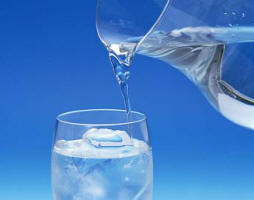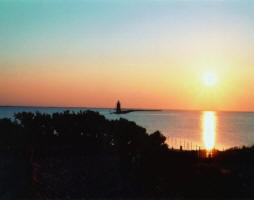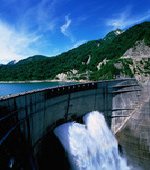 Nanomaterials for Water Treatment: Opportunities and Barriers
Nanomaterials for Water Treatment: Opportunities and Barriers
To date, the world is facing great challenges in meeting the rising demands of potable water. Availability of freshwater supplies is decreasing in many regions of the world and pollution of surface and groundwater keepsgrowing. Water stress resulting form this situation has arisen strong concerns in the past years that are nowreaching public awareness as well as political spheres. It is widely acknowledged that actual systems for watermanagement or treatment are insufficient to face the coming water crisis. That is why these systems need tobe strengthened by novel approaches.
Nanotechnology represents one of these promising novel approaches. Due to their outstanding properties, nanomaterials offer very attractive solutions to eliminate a wide range of contaminants, from toxic metal ions tomicroorganisms. Moreover, their increased surface area and thereby enhanced reactivity, reduces the amount ofmaterial necessary resulting in more efficient processes and material saving.
In this context, the workshop aims at gathering, not only scientif ic exper ts on environmental nanotechnology, but also water treatment industry and administration to create a privileged forum for exchange and discussion. During the debate the potential of nanotechnologies for water treatment will be analysed, taking into account technological opportunities and industry needs, as well as, the existing barriers slowing down their implementation.
The workshop will have a special focus on the following topics:
• nZVI for groundwater remediation.
• TiO2 for water decontamination.
• Potential environmental implications of nanomaterials.
This event is aimed at creating a privileged context of discussion on the topic of nanomaterials applied to water treatment. Nanotechnology for Water Treatment will be considered from two perspectives: the opportunities that this technology offers for the water industry and possible barriers that may arise from the suspected impact of nanomaterials on the environment.
Nanotechnology offers very promising approaches to tackle future challenges in water treatment. Due to their outstanding properties, nanomaterials are able to eliminate a wide range of contaminants, from toxic metal ions to persistent organic molecules. Moreover, their increased surface enhances considerably their reactivity resulting in more efficient processes and a lower consumption of resources.
The workshop “Nanomaterials for Water Treatment: opportunities and barriers” will mainly cover two nanotechnological applications: TiO2 photocatalysis for waste water treatment and zero-valent iron (nZVI) for groundwater remediation. To extend the scope of the debate the workshop will also have a special focus on the policy context and the potential environmental implications of nanomaterials.
During three days leading scientists from the EU, USA and Japan, will be gathered. Presentations will be followed by 1 hour debate session in order to promote exchange and discussion between the participants.
| Contact information |
Mª Asunción Ruiz
(email: mar@labein.es) Phone: +34 94 607 34 69 ; Fax: +34 94 607 33 49 |
|---|---|
| Event type | Conference |
| File link |
http://www.parque-tecnologico.net/wWeb/eu/docs/Berriak/Nanomaterials%20for%20water%20treatment%20WS.pdf |
| Source | WaterLink |
| Subject(s) | ANALYSIS AND TESTS , CHARACTERISTICAL PARAMETERS OF WATERS AND SLUDGES , DRINKING WATER , DRINKING WATER AND SANITATION : COMMON PROCESSES OF PURIFICATION AND TREATMENT , HEALTH - HYGIENE - PATHOGENIC MICROORGANISM , MEASUREMENTS AND INSTRUMENTATION , PREVENTION AND NUISANCES POLLUTION , SANITATION -STRICT PURIFICATION PROCESSES , WATER QUALITY |
| Relation | http://www.parque-tecnologico.net/aPTBW/web/en/news/TECN_20100813.jsp |
| Geographical coverage | Spain, |
| Address | Bilbao |
| Organizer | Tecnalia with support of the Vasc Government |
| Target audience | International |
| Period | [04/10/2010 - 06/10/2010] |
| Status | Confirmed |
| Working language(s) | ENGLISH , SPANISH |
 you are not logged in
you are not logged in





